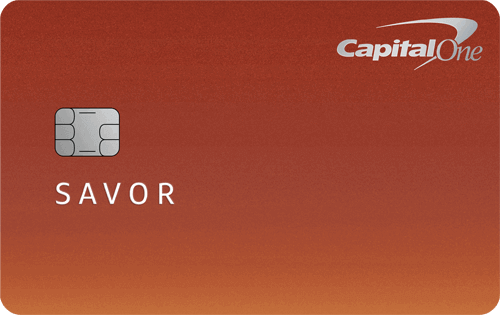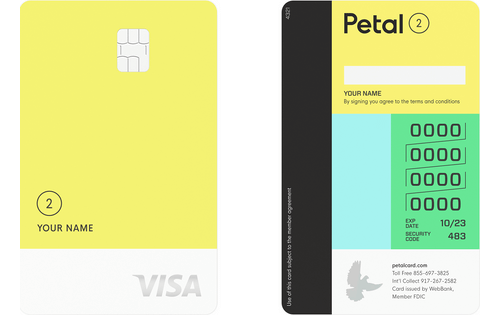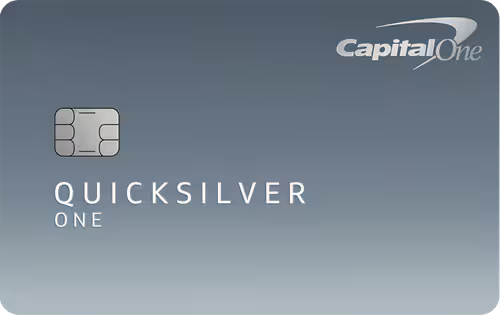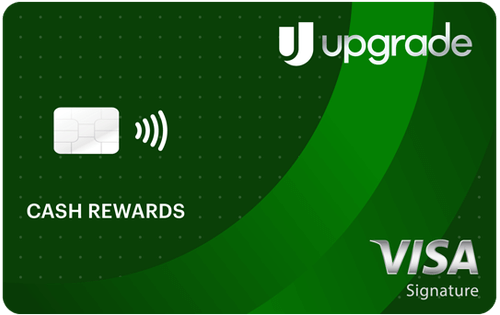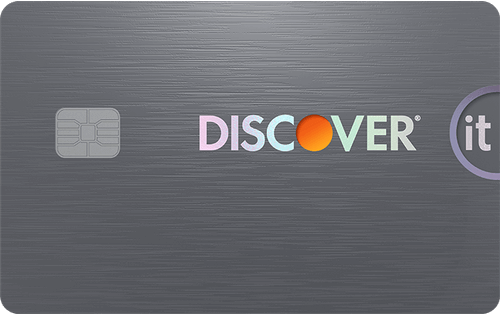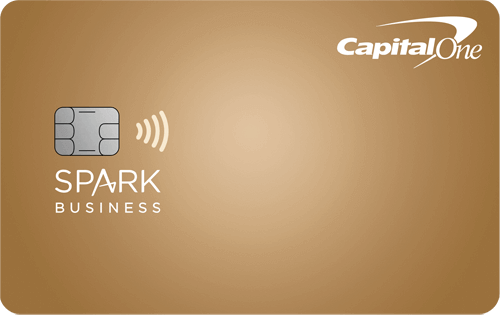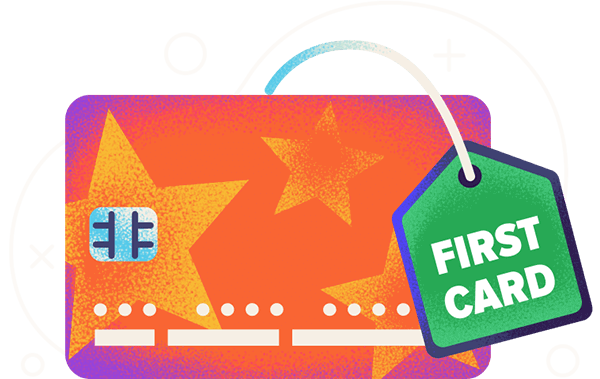- Our picks
- How to choose your first credit card
- How to make the most of your first credit card
- Methodology
- About the author
- User questions & answers
- Expert opinions
Best Credit Cards for First-Timers
Your goal in shopping for your first credit card, once you turn 18 and can qualify for your own account, should be to find an offer with low fees and approval requirements that you can comfortably meet. So WalletHub’s editors compared hundreds of credit cards in search of deals fitting that description. Below, you can compare our picks for the best first credit cards for 18-year-olds (and up) in a few key categories.
| Credit Card | Best For | Annual Fee |
| Petal® 2 Visa® Credit Card | Winner | $0 |
| Discover it® Secured Credit Card | Building Credit | $0 |
| opensky® Plus Secured Visa® Credit Card | No Credit Check | $0 |
| Capital One QuicksilverOne Cash Rewards Credit Card (see Rates & Fees) | Cash Back | $39 |
| Capital One Savor Student Cash Rewards Credit Card (see Rates & Fees) | College Students | $0 |
How to Choose Your First Credit Card
Check your credit score
If you have no prior credit experience, you won’t have a credit score. So you can focus on cards designed for people with limited or no credit. But you will if you’ve used credit in the past, even as an authorized user. And how good (or bad) your resulting score is will dictate what cards you should consider.
Get a student card if you can
The best first credit card for students is definitely one branded for student use. College student credit cards tend to have the best terms of all the cards available to people with limited or no credit. And if you have an active college or university email address, you’ll be able to qualify for one.
Focus on low fees
The best feature a first credit card can have is no annual fee. Most first credit cards simply don’t offer enough rewards or interest savings for paying a fee to make sense. So you’re better off saving your money for bill payments.
Take advantage of existing relationships
A great place to get your first credit card is the bank or credit union that you already have a banking relationship with, as that could make it easier to get approved. Your personal relationships could also help you become an authorized user on a friend’s or family member’s account in order to boost your credit-building efforts. However, the rewards, interest rates and fees that your first credit card offers are still more important than where exactly you get it.
Try to apply just once
Applying for numerous credit cards within a short period of time can hurt your credit score. So don’t apply in bunches or for a card that requires much better credit than you currently have.
Get a card with no credit check if you’re rejected
If you don’t get approved for your first choice, consider simply placing a refundable deposit on a secured credit card that won’t check your credit history when you apply.
These rules of thumb are all important to remember, but if you want to really make things easy, you can simply refer to the table below.
Which Type of Credit Card Should You Choose First?
| Category | Recommended Card Type | Reason(s) |
| College students who are new to credit | Student credit card | Offers rewards and perks not typically available to non-students with limited credit. |
| Non-students looking to build credit | Starter credit card | Accepts people with limited or no credit history |
| People who want high approval odds | Secured credit card | Requires a refundable security deposit. Easy to get even with no credit/bad credit. |
It’s important to remember that while your first credit card is important, how you use it matters more. A good first credit card will help you save money on fees and maybe even offer some rewards. But paying your bill on time every month and using only a modest amount of your credit line will help you quickly improve your credit standing. And a solid credit score will save you far more than any credit card at this point in your credit career. That's especially true if you’re only 18 years old and thus have limited income and expenses, plus decades of financial independence ahead of you.
So don't drag your heels when it comes to applying for your first credit card, or think your job is over once you’ve opened it.
How to Make the Most of Your First Credit Card
When managed responsibly, your first credit card can be an effective tool for building credit and earning rewards. To make the most of your first credit card’s potential to save you money now and set you up for future opportunities, make sure to do the following:
Pay your bill on time, every time.
Your payment history is the most important factor in your credit score, accounting for 35% to 41% of your score, depending on the scoring model used. Missed payments can trigger late fees and damage your credit. You only need to make the minimum payment by the due date to avoid those penalties, but you should always pay the full statement balance, if possible. This prevents interest from accumulating, saving you money and helping you avoid a cycle of debt.
Keep your credit utilization low.
Lenders look at your credit utilization ratio, or the amount you owe compared to your credit limit, to gauge your ability to manage debt responsibly. A low credit utilization ratio can lead to better interest rates, higher credit limits, and a higher credit score.
Aim to use less than 30% of your credit. For example, on a card with a $1,000 limit, keep your balance under $300.
Only use your card for purchases you can afford to pay off.
The "golden rule" is to only charge purchases you can afford to pay off with cash you already have. This enables you to avoid high interest charges, which can quickly lead to unsustainable debt and damage your credit score.
Initially, consider using your card for one or two small, recurring monthly bills, like a streaming service or a tank of gas and pay the statement balance in full each month. This practice helps you stay within your budget without risking overspending.
Create a budget.
A budget can help you plan your spending and avoid accumulating debt. Without a budget, it's easy to lose track of your purchases and spend more than you can comfortably repay. There are budgeting tools, such as those offered by WalletHub, that can streamline the budgeting process and help you find the best strategy for managing your debt.
For additional tips, check out WalletHub’s guide on how to make a budget.
Set up automatic payments.
Automating your payments is the easiest way to ensure you never miss a due date. You can set up autopay for at least the minimum amount due, a fixed amount, or the full statement balance. It’s best to do the full statement balance, since you’ll avoid interest charges that way.
Don't apply for too many accounts at once.
Applying for multiple credit cards in a short span of time can lower your credit score and signal to lenders that you are a high-risk borrower. Plus, each application for new credit can trigger a hard inquiry on your credit reports, which will knock a few points off of your credit score.
In addition, opening several new accounts in a short time frame reduces the average age of your credit history, which can also cause a dip in your credit score. So once you have a credit card, it's wise to stick with that card for a while.
Earn rewards wisely.
If your card offers cash back or reward points, use it for purchases within your budget to get extra value. Don't overspend just to earn rewards, as interest charges will erase any benefits if you can’t pay the bill in full every month.
Monitor your account for fraud.
Regularly reviewing your credit card statements for any unauthorized transactions is very helpful. This gives you the opportunity to dispute inaccurate charges. You can also set up transaction alerts through your issuer's mobile app or online banking to get real-time notifications. In addition, you can sign up for free credit monitoring right here on WalletHub.
Avoid cash advances.
Don't withdraw cash using your credit card. Cash advances typically come with higher interest rates and fees that apply immediately.
Don’t wait too long to get your first credit card.
There are significant disadvantages to putting off getting your first credit card. For one thing, a lack of credit history can make it difficult to get approved for loans with favorable terms. The age of your credit accounts also affects your credit score, and each month you don’t have a credit card is one missed opportunity to add positive information to your credit reports.
Watch and learn.
One of the best ways to learn about credit is to simply watch how your credit score changes over time in accordance with your spending and payment habits. And WalletHub is the best place to do so, as it offers free credit scores and full credit reports that are updated on a daily basis. Your free WalletHub account will also provide personalized grades for each component of your credit score and customized recommendations for credit-card upgrades when the time comes.
Learn more about how to get a credit card for the first time.
Methodology for Selecting the Best First Credit Cards
To identify the best first credit card for different types of first-time credit card users, WalletHub’s editors regularly compare more than 1,500 credit card offers based on key WalletHub Rating components, including their approval requirements, fees, rewards, interest rates, and credit-reporting practices. This enables us to find the best first-time credit cards with the lowest two-year cost, which will allow you to save as much money as possible while you build credit.
How Two-Year Cost Is Calculated
Two-year cost is used to approximate the monetary value of cards for better comparison and is calculated by combining annual and monthly membership fees over two years, adding any one-time fees or other fees (like balance transfer fees), adding any interest costs, and subtracting rewards. Negative amounts indicate savings. When fees or other terms are presented as a range, we use the midpoint for scoring purposes.
Rewards bonuses and credits have been taken into account for two-year cost calculations. However, bonuses applicable to only a very small portion of cardholders are not considered. For example, credits and bonuses awarded for spending or redeeming rewards through a company portal with non-co-branded cards have not been taken into account. Similarly, bonuses and credits related to spending with specific merchants using a non-co-branded card have not been taken into account (for example, if Card A offers credits with DoorDash, this feature would not be factored into calculations because it is hard to assess how many cardholders would use the benefit or exactly how much value they'd get from it).
Cardholder Spending Profiles
Given that different users have different goals and are likely to use their credit cards differently, we identified spending profiles that are representative of different users’ financial priorities and behaviors. For each cardholder type, we have assumed a specific amount of monthly spending by purchase type (e.g., groceries, gas, etc.), as well as an average balance, balance transfer amount, amount spent on large purchases and average monthly payment. Spending assumptions are based on Bureau of Labor Statistics data.
